Abstract
Ozone, in a liquid-phase application, was evaluated as a residue-free viral inactivant that may be suitable for use in an arboviral research laboratory. Commonly used sterilizing agents may leave trace residues, be flammable or explosive, and require lengthy periods for gases or residues to dissipate after decontamination of equipment such as biological safety cabinets. Complete liquid-phase inactivation of Venezuelan equine encephalomyelitis virus was attained at 0.025 mg of ozone per liter within 45 min of exposure. The inactivation of 10(6.5) median cell culture infective doses (CCID50 of Venezuelan equine encephalomyelitis virus per milliliter represented a reduction of 99.99997% of the viral particles from the control levels of 10(7.25-7.5) CCID50/ml. A dose-response relationship was demonstrated. Analysis by polynomial regression of the logarithmic values for both ozone concentrations and percent reduction of viral titers had a highly significant r2 of 0.8 (F = 63.6; df = 1, 16). These results, together with those of Akey (J. Econ. Entomol. 75:387-392, 1982) on the use of ozone to kill a winged arboviral vector, indicate that ozone is a promising candidate as a sterilizing agent in some applications for biological safety cabinets and other equipment used in vector studies with arboviruses.
Full text
PDF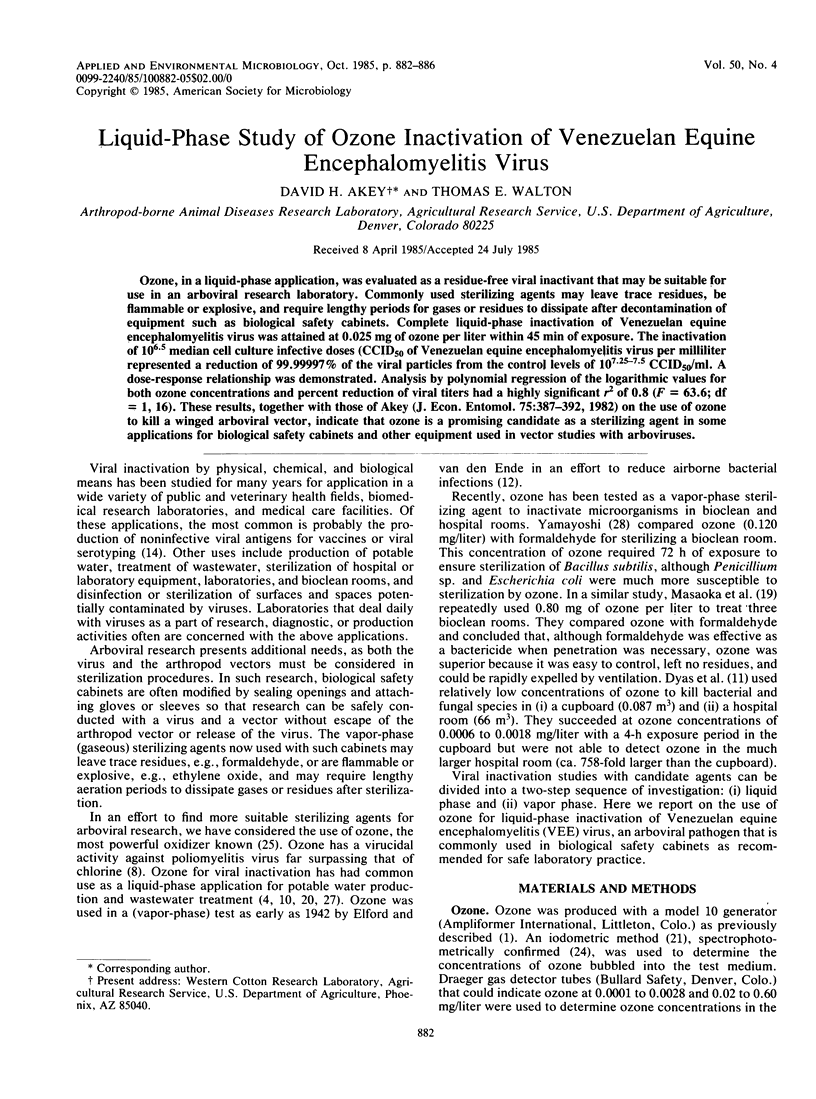
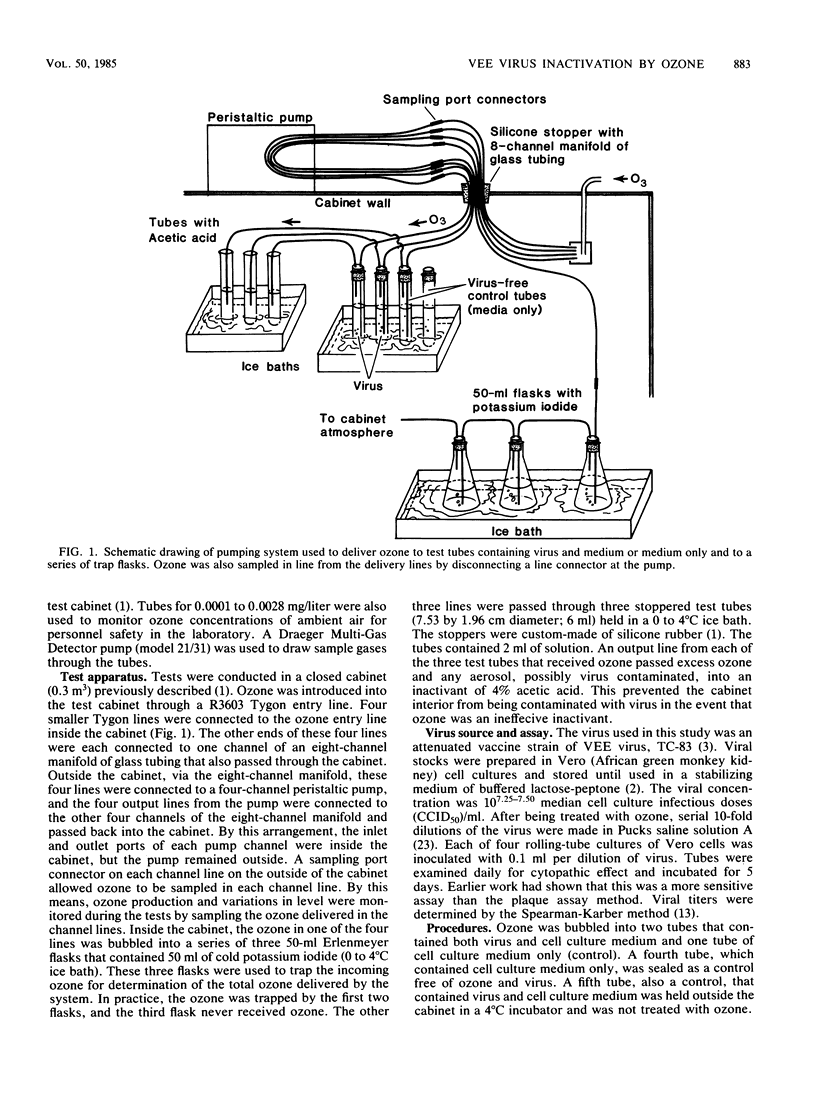
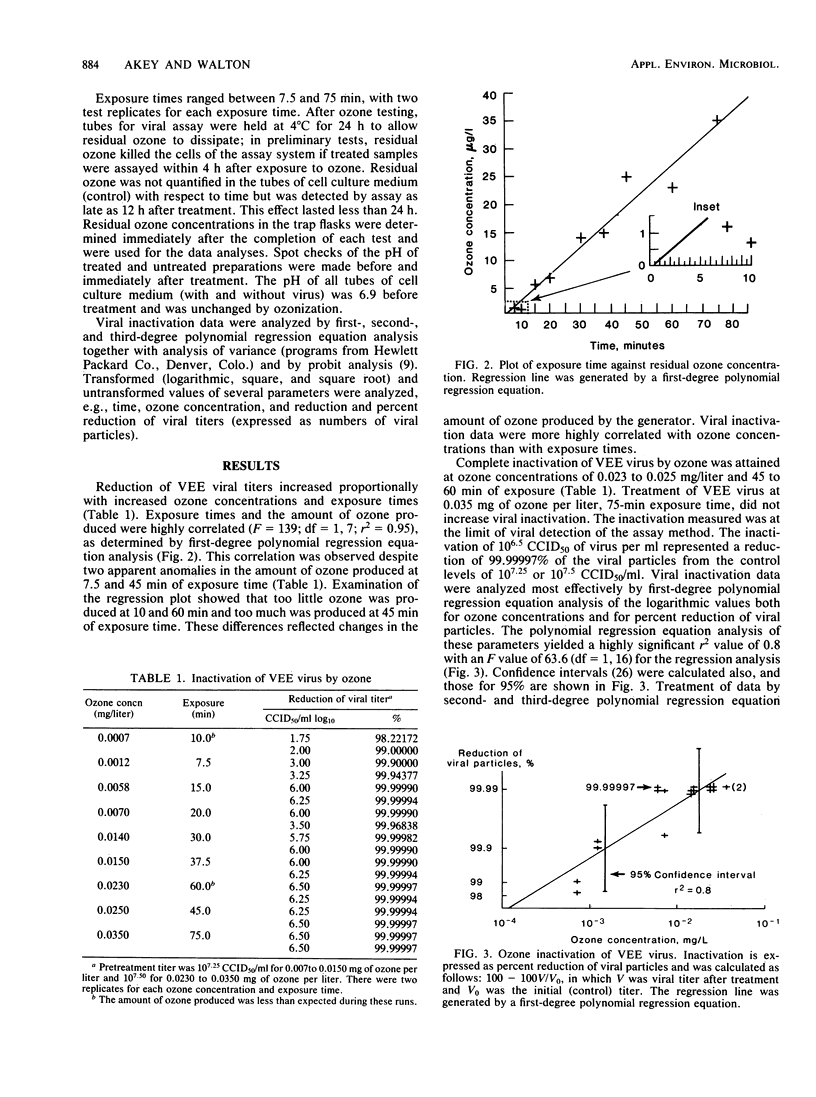
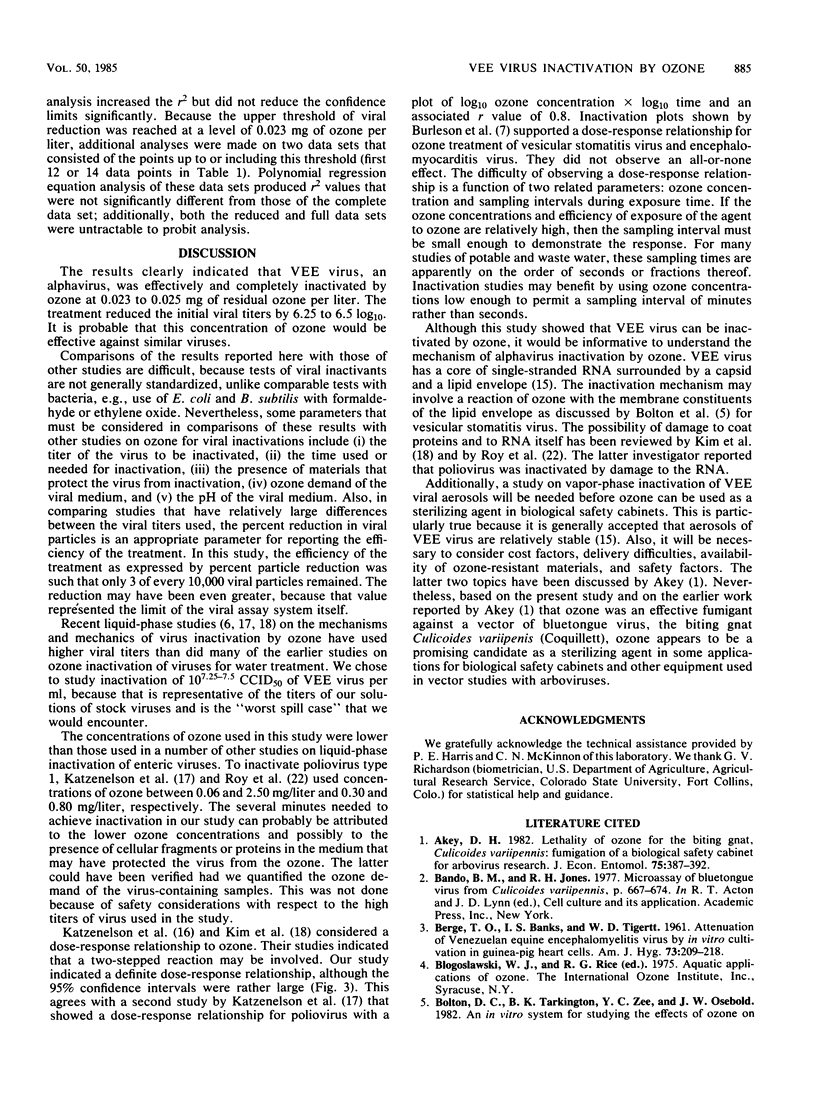
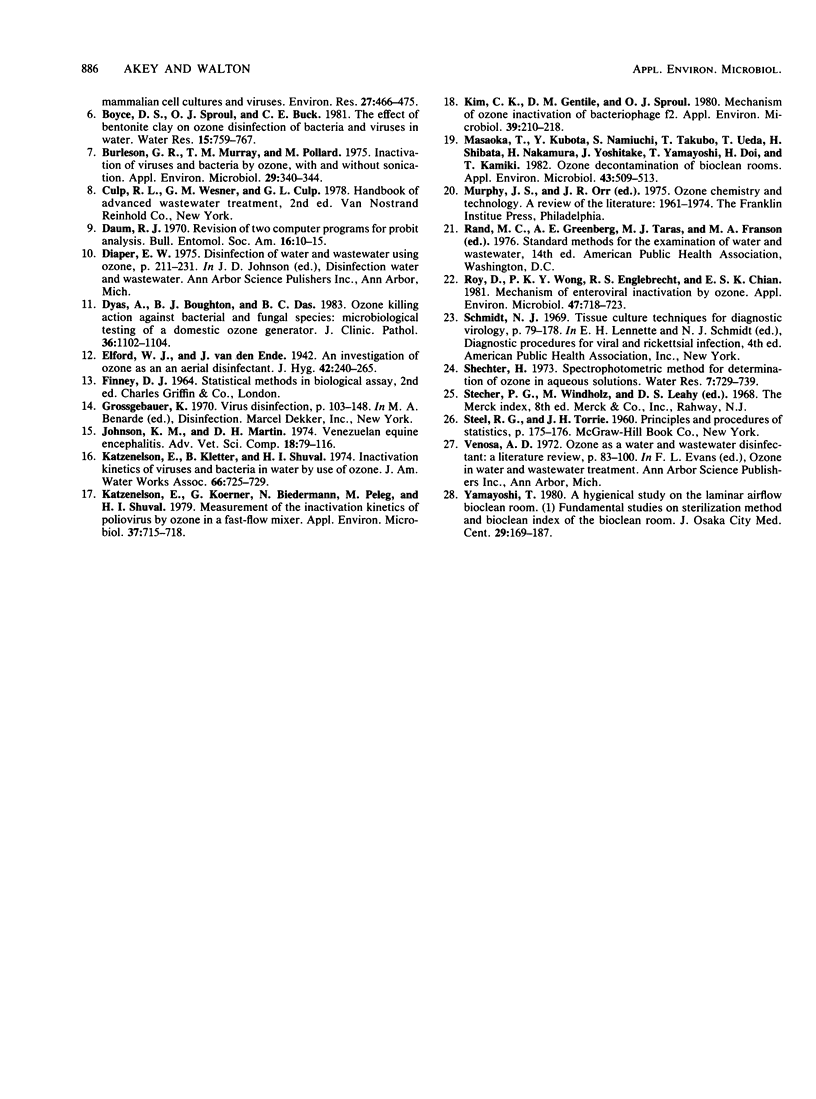
Selected References
These references are in PubMed. This may not be the complete list of references from this article.
- Akey D. H. Lethality of ozone for the biting gnat, Culicoides variipennis: fumigation of a biological safety cabinet for arbovirus research. J Econ Entomol. 1982 Apr;75(2):387–392. doi: 10.1093/jee/75.2.387. [DOI] [PubMed] [Google Scholar]
- Bolton D. C., Tarkington B. K., Zee Y. C., Osebold J. W. An in vitro system for studying the effects of ozone on mammalian cell cultures and viruses. Environ Res. 1982 Apr;27(2):466–475. doi: 10.1016/0013-9351(82)90101-3. [DOI] [PubMed] [Google Scholar]
- Burleson G. R., Murray T. M., Pollard M. Inactivation of viruses and bacteria by ozone, with and without sonication. Appl Microbiol. 1975 Mar;29(3):340–344. doi: 10.1128/am.29.3.340-344.1975. [DOI] [PMC free article] [PubMed] [Google Scholar]
- Dyas A., Boughton B. J., Das B. C. Ozone killing action against bacterial and fungal species; microbiological testing of a domestic ozone generator. J Clin Pathol. 1983 Oct;36(10):1102–1104. doi: 10.1136/jcp.36.10.1102. [DOI] [PMC free article] [PubMed] [Google Scholar]
- Johnson K. M., Martin D. H. Venezuelan equine encephalitis. Adv Vet Sci Comp Med. 1974;18(0):79–116. [PubMed] [Google Scholar]
- Katzenelson E., Koerner G., Biedermann N., Peleg M., Shuval H. I. Measurement of the inactivation kinetics of poliovirus by ozone in a fast-flow mixer. Appl Environ Microbiol. 1979 Apr;37(4):715–718. doi: 10.1128/aem.37.4.715-718.1979. [DOI] [PMC free article] [PubMed] [Google Scholar]
- Kim C. K., Gentile D. M., Sproul O. J. Mechanism of Ozone Inactivation of Bacteriophage f2. Appl Environ Microbiol. 1980 Jan;39(1):210–218. doi: 10.1128/aem.39.1.210-218.1980. [DOI] [PMC free article] [PubMed] [Google Scholar]
- Masaoka T., Kubota Y., Namiuchi S., Takubo T., Ueda T., Shibata H., Nakamura H., Yoshitake J., Yamayoshi T., Doi H. Ozone decontamination of bioclean rooms. Appl Environ Microbiol. 1982 Mar;43(3):509–513. doi: 10.1128/aem.43.3.509-513.1982. [DOI] [PMC free article] [PubMed] [Google Scholar]
- Roy D., Wong P. K., Engelbrecht R. S., Chian E. S. Mechanism of enteroviral inactivation by ozone. Appl Environ Microbiol. 1981 Mar;41(3):718–723. doi: 10.1128/aem.41.3.718-723.1981. [DOI] [PMC free article] [PubMed] [Google Scholar]


